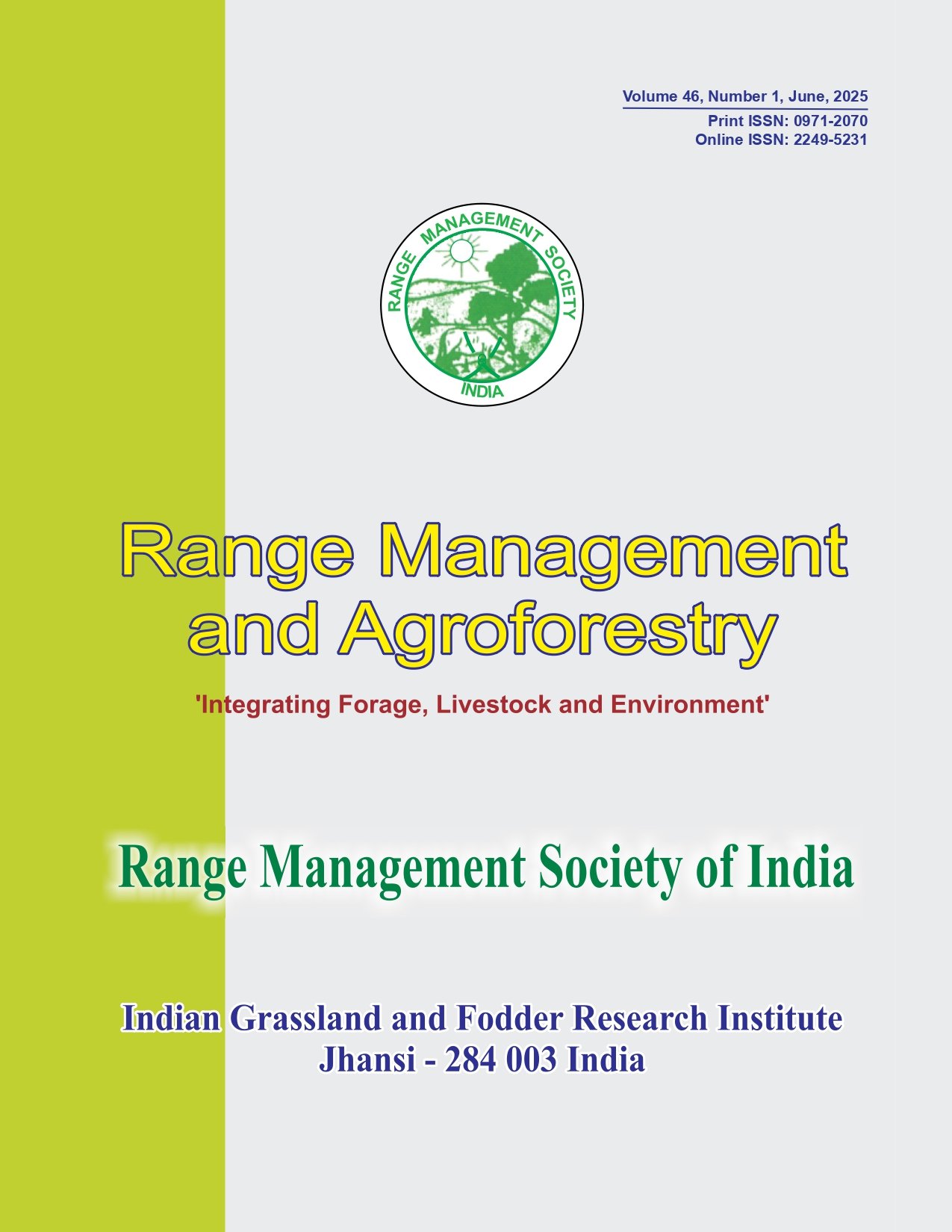Characterization of underutilized shrubs for forage potential in rainfed and dry areas
Keywords:
Forage yield potentials, Livestock, Nutritional quality, Underutilized shrubsAbstract
Shrubs are considered as important genetic resources for fodder supplements in dry areas. Accordingly eight underutilized forage shrubs (Grewia asiatica, G. hirsute, G. flavescence, Bauhinia racemosa, Helicteres isora, Ehretia aspera, and Vitex negundo) were evaluated for their morphology, growth, forage production potential and nutritional quality under rainfed conditions. Securinega virosa had maximum plant height (275.3 cm) and high number of primary branches was observed in Grewia hirsuta (12.7). Securinega virosa gave maximum (15.7) response to secondary branches but tertiary branches were found maximum in Bauhinia racemosa (18.0). High number of leaves was observed in Bauhinia racemosa (249.3), however maximum leaf size was observed in Grewia asiatica (14.2 cm × 10.7 cm). Securinega virosa had maximum total biomass yield (8.87 kg/plant) with maximum leaves (6.60 kg/plant) as green fodder yield (GFY) and leaf to stem (wood) ratio (3.0). Average crude protein (CP) content of the green foliage ranged between 12.45 to 17.74% being found maximum in Ehretia aspera. While maximum NDF (63.42%) and ADF (48.68%) contents were observed in Grewia asiatica foliages. Similarly, cellulose and lignin contents were ranged from 7.97-26.40% and 12.75-21.76%, respectively and found maximum in Helicteres isora and Vitex negundo, respectively. The values in ash content were ranged from 7.84-12.89%, being maximum in Ehretia aspera. Shrubs like Vitex nigundo and Securinega virosa were found promising in terms of high protein contents and biomass yields.




